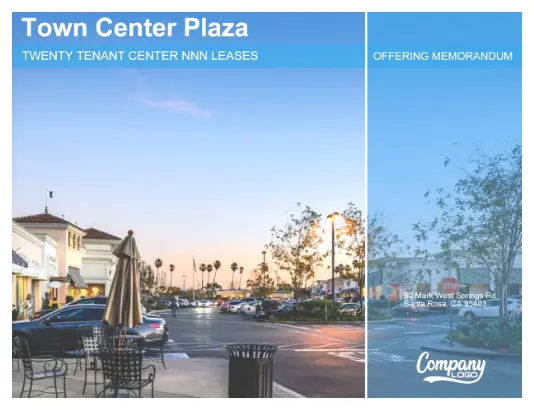A real estate investment memorandum is a critical document that provides potential investors with all the necessary information to make an informed decision about investing in a property. It serves as a detailed and structured overview of the investment opportunity, highlighting key data and insights. Crafting a compelling and comprehensive real estate investment memorandum requires careful consideration of what to include. This blog will guide you through the essential sections that should be part of every investment memorandum, utilizing CREOP’s intuitive real estate investment memorandum template to streamline the process.
Executive Summary
The executive summary is the gateway to your investment memorandum. It should provide a concise overview of the investment opportunity, summarizing the key points that will be detailed in the following sections. This includes the property type, location, investment required, expected return on investment, and the unique selling points of the property. The executive summary sets the tone and hooks the investor’s interest, making it one of the most critical sections of the document.
Property Description
This section should offer a detailed description of the property, including its physical attributes, size, condition, and any relevant photographs or diagrams. Details about recent upgrades or renovations should also be included. This section aims to give investors a clear picture of what the property entails and its potential for future improvements or developments.
Market and Location Analysis
Investors will want to understand the market conditions and the location of the property. This section should include analysis of the local real estate market, demographic data, economic indicators, and trends that affect property values. Include information about the neighborhood, nearby amenities, transportation links, and any other factors that might influence the property’s desirability and potential for appreciation.
Financial Analysis
The financial analysis is arguably the heart of the real estate investment memorandum. Use this section to detail the financial aspects of the investment, including purchase price, projected income, operating expenses, and cash flow. It should also include a detailed breakdown of the investment’s projected returns, such as the internal rate of return (IRR), net present value (NPV), and cap rate. CREOP’s real estate investment memorandum template can help structure this data in a clear, understandable manner that aligns with industry standards.
Investment Structure
Detail the structure of the investment in this section, including information on the ownership entity, funding arrangements, investor contributions, and the distribution of earnings and cash flows. It’s important to clarify how the investment will be managed, who will be involved, and the roles and responsibilities of each party. This section helps set expectations and defines the governance of the investment.
Risk Analysis
Investing in real estate involves inherent risks, and it’s crucial to communicate these to potential investors. This section should outline the possible risks associated with the investment, including market risks, regulatory changes, and potential environmental concerns. It should also provide strategies for mitigating these risks, demonstrating a proactive approach to managing investment uncertainties.
Exit Strategy
Investors will want to know the exit strategy for the investment, which outlines how and when they can expect to see a return on their investment. This could include plans for selling the property, refinancing options, or other liquidity events. Clear communication about the exit strategy reassures investors about the feasibility of achieving the projected returns.
Legal and Regulatory Information
Finally, include any legal and regulatory information relevant to the investment. This could involve zoning laws, compliance requirements, and any other legal aspects that might impact the property or the investment structure.
Conclusion
A well-structured real estate investment memorandum is an invaluable tool in attracting and securing investment. By including these essential sections, you ensure that the document is not only informative but also compelling. CREOP’s real estate investment memorandum template provides a structured way to assemble this information, ensuring clarity and professionalism in your presentation to potential investors. Remember, the goal is to build confidence among investors by transparently presenting a comprehensive and detailed view of the investment opportunity. Book a demo with CREOP today to see how our real estate investment memorandum template can improve your commercial real estate marketing.





